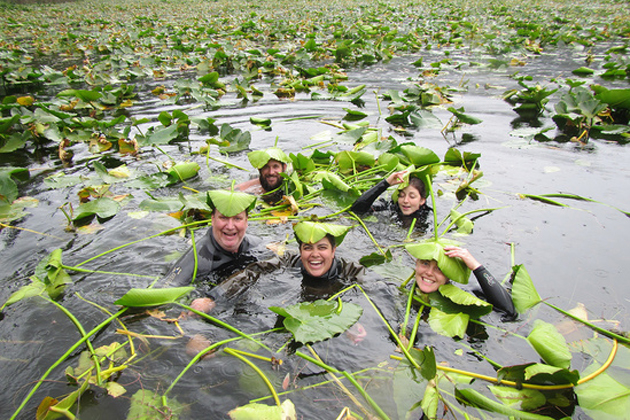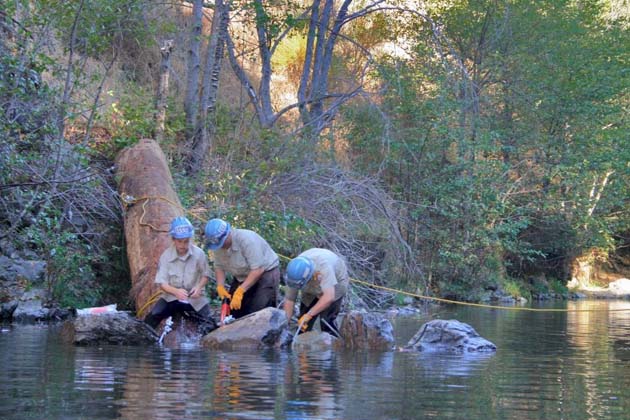 Veterans Succeed in Battle for Endangered Fish
Veterans Succeed in Battle for Endangered Fish
Salmon habitat restoration work is not for everyone-think heavy lifting, unpredictable weather, and sometimes remote locations. You’ll definitely get your feet wet. All this is necessary, however, if we’re going to save wild salmon from extinction.

Photo: Carolyn Jacobson, veteran U.S. Army, joined the 2015 NOAA/CCC Veterans Fisheries Corps Program. NOAA image.
[dropcap]W[/dropcap]here can you find people eager to do hard physical work in dirty, dangerous, or isolated conditions? People who are resourceful in unexpected situations? How about workers who can commit to goals and work well in teams?
Look no further than the military veterans who’ve served our country, and are looking to build skills in conserving our country’s resources.
NOAA Veteran Fisheries Corps
Starting in 2012 NOAA teamed with California Department of Fish and Wildlife and the California Conservation Corps to create the NOAA/CCC Veterans Corps Fishery Program. NOAA Veterans Corps provides an opportunity for post-9/11 veterans to build their skills and work experience in conservation work for endangered salmon and steelhead in California. This year-long program of paid training and hands-on experience includes marine restoration for native fish as well as research and monitoring to track progress of salmonid restoration projects.
NOAA has dozens of projects manned by teams of dedicated people working to protect these iconic fish. The goal of habitat restoration is to ensure living conditions that support the entire lifecycle of salmon, especially their successful reproduction.
Restoration Responds to Salmons’ Adventurous Life Cycle

Veterans perform snorkel surveys to count juvenile salmon and nests of salmon eggs, known as redds, throughout the year. In this photo, the snorkel team surfaced under a patch of lily pads. Photo: California Conservation Corps
Salmon need cold, fast-flowing, gravelly stream beds for their eggs to survive. Restoration projects include removing dams that block fish from the higher streams they need to reach. Young fish need sheltered pools to survive predators, floods, and drought. NOAA Restoration Center projects include opening up estuaries and floodplain again, taking out dams, and recreating diversions so they have a safe home after they hatch.
The restoration effort also needs monitors, staff who will do whatever it takes to collect data to demonstrate the success of restoration projects. This means traveling to remote, wet locations repeatedly, in different seasons, trapping fish, taking measurements, or even snorkeling to count salmon nests. This detailed, but rugged, work gives veterans specialized marine restoration skills that can aid them in building their civilian career.
“Protecting and restoring salmonid habitat is a top priority,” says Leah Mahan, Marine Habitat Resource expert with NOAA Fisheries. “There’s always a need for capable restoration staff.”
Helping Restoration Go Farther, Faster

NOAA/CCC Veterans Corps collects data on the Eel River. NOAA image.
NOAA’s Veterans Fisheries Corps has completed dozens of critical habitat restoration projects that support fisheries, thanks to the excellent civilian service our veterans continue to serve our country. This helps endangered native fish and NOAA Fisheries by speeding up progress toward our goals.





